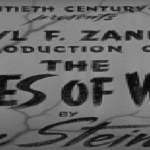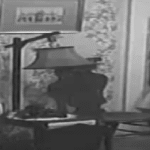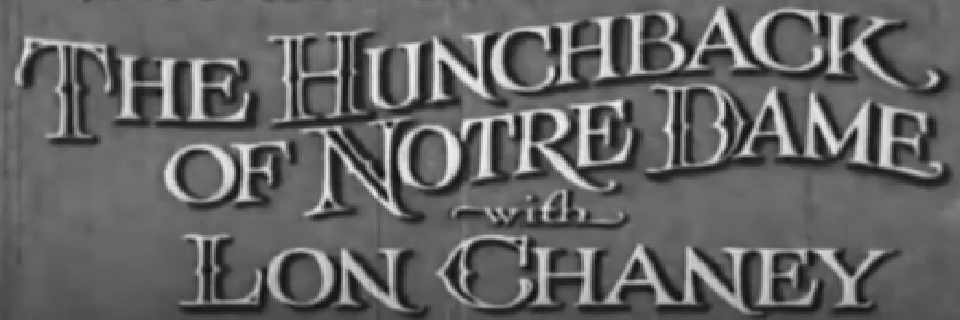Set in 15th-century Paris, The Hunchback of Notre Dame (1923) is a monumental silent-era adaptation of Victor Hugo’s 1831 novel, brought to life with grand spectacle and emotional depth. At its heart lies a tale of unrequited love, social injustice, and the clashing forces of beauty and grotesquery, framed by the looming presence of the Notre Dame Cathedral.
The film opens during the vibrant Festival of Fools, a riotous annual celebration of misrule and mockery. Amid the revelry, the crowd elects the most hideous face as the “King of Fools”, a title awarded to the physically deformed bell ringer of Notre Dame, Quasimodo, portrayed with haunting poignancy by Lon Chaney. His disfigurement, featuring a hunched back and a single eye, strikes fear into the hearts of the public, though his inner nature is one of loyalty and gentleness. Raised by the scheming Archdeacon Jeahan Frollo, Quasimodo is treated as little more than a tool in the eyes of his master.
Jeahan Frollo, unlike in Hugo’s original novel, is depicted in this version as the Archdeacon himself, a man torn between religious duty and dark obsession. He becomes infatuated with Esmeralda, a beautiful Romani dancer whose exotic charm enchants the city but also incites jealousy, fear, and lust. Her performances draw crowds, including the noble Phoebus de Chateaupers, a captain in the King’s guard who is equally captivated by her.
Frollo’s desire for Esmeralda soon descends into dangerous obsession. Unable to suppress his feelings, he orders Quasimodo to abduct her. The plan is thwarted by Phoebus, who intervenes and rescues Esmeralda. Quasimodo is arrested and publicly flogged, left tied to a whipping post while the crowd jeers. His cries for water go unanswered until Esmeralda, moved by pity, offers him a drink, an act of compassion that Quasimodo never forgets.
This moment marks a profound turning point in Quasimodo’s character. From this point on, he becomes Esmeralda’s protector, though his love remains silent and unrequited. Esmeralda, meanwhile, finds herself courted by Phoebus, whose attentions seem gallant but ultimately lack sincerity. Though they share moments of affection, it is clear that Phoebus does not possess the depth of feeling that Quasimodo harbours quietly.
Jeahan Frollo, maddened by rejection, exacts his revenge in devastating fashion. In a pivotal scene, he stabs Phoebus while the soldier is with Esmeralda, and frames her for the attack. She is arrested and sentenced to hang for attempted murder. Quasimodo, witnessing the injustice, swings down from the cathedral just in time and carries her into the sanctuary of Notre Dame, invoking the medieval right of asylum.
Within the cathedral’s stone walls, the two outcasts, one for her ethnicity, the other for his appearance, find temporary refuge. Quasimodo devotes himself to caring for Esmeralda, defending her from threats and watching the city from the bell tower. His love for her is pure and self sacrificing, in sharp contrast to Frollo’s manipulative obsession.
As political tensions rise and the common people rally for Esmeralda’s release, Frollo plots to betray her sanctuary. He persuades the King that her right to asylum should be revoked, prompting soldiers to storm the cathedral. Quasimodo defends it with fierce determination, hurling stones and molten lead from the heights in a desperate attempt to protect her. In the film’s dramatic climax, Frollo tries once more to seize Esmeralda. Quasimodo confronts him on the rooftop and, in a symbolic act of justice, throws him from the parapet to his death.
Despite Quasimodo’s heroism, Esmeralda’s fate is sealed. She is recaptured and executed, a tragic victim of societal prejudice and political corruption. In the film’s final, heart-wrenching scene, Quasimodo returns to the cathedral, now empty of the one soul who showed him kindness. The camera lingers as he mourns Esmeralda, clutching the bells above Paris, no longer symbols of celebration, but of solitude and grief.
The Hunchback of Notre Dame (1923) is far more than just a silent film, it is a landmark in the history of early cinema. Produced by Universal Pictures, it helped cement the studio’s legacy in Gothic horror and paved the way for their classic monster films of the 1930s. Lon Chaney’s performance is central to the film’s enduring legacy. Known as “The Man of a Thousand Faces”, Chaney not only acted but also designed his own elaborate prosthetics, which included a heavy hump, facial distortions, and a restrictive body harness. His portrayal captures both the physical grotesquery and emotional sensitivity of Quasimodo with remarkable nuance.
The film’s production values were exceptionally ambitious for the time. A vast replica of medieval Paris and the Notre Dame Cathedral was constructed on Universal’s backlot, creating a visually rich environment that brought Hugo’s world vividly to life. The attention to period detail from architecture to costume, helped immerse audiences in the historical setting.
Director Wallace Worsley, working alongside Chaney and cinematographer Robert Newhard, crafted a film rich in atmosphere and visual expression. Drawing from the aesthetics of German Expressionism, the use of stark contrasts, dramatic shadows, and towering sets infused the film with intensity and grandeur. The cathedral itself becomes a character in the story, both a sanctuary and a prison.
At its heart, the film is a story of marginalisation—of those judged for their appearance, background, or status. Quasimodo and Esmeralda are both ostracised by society: one for his physical deformities, the other for her ethnicity and beauty. Their bond, while not romantic, becomes a powerful expression of human empathy and loyalty. Quasimodo’s final act of love, accepting Esmeralda’s death and returning to a life of seclusion, cements his role as one of the most tragic and noble figures in early cinema.
Unlike many later adaptations that sanitise the story or simplify its characters, the 1923 version retains much of the darkness and complexity of Hugo’s novel. Frollo is not merely a villain, but a man consumed by internal conflict and repression. Phoebus is not a flawless hero, but a symbol of privilege and superficial charm. These layers give the film a maturity rarely seen in early Hollywood productions.
The Hunchback of Notre Dame was a tremendous commercial success upon its release and marked a turning point in silent film artistry. It not only elevated Lon Chaney to legendary status but also demonstrated the potential of cinema to portray grand themes with emotional depth and visual spectacle.
Even today, the film remains a cornerstone of cinematic history, remembered for its sweeping sets, groundbreaking makeup effects, and the timeless humanity of its central figure. It’s a story that continues to resonate, reminding us of the enduring value of compassion over appearances, and of love that gives rather than takes







